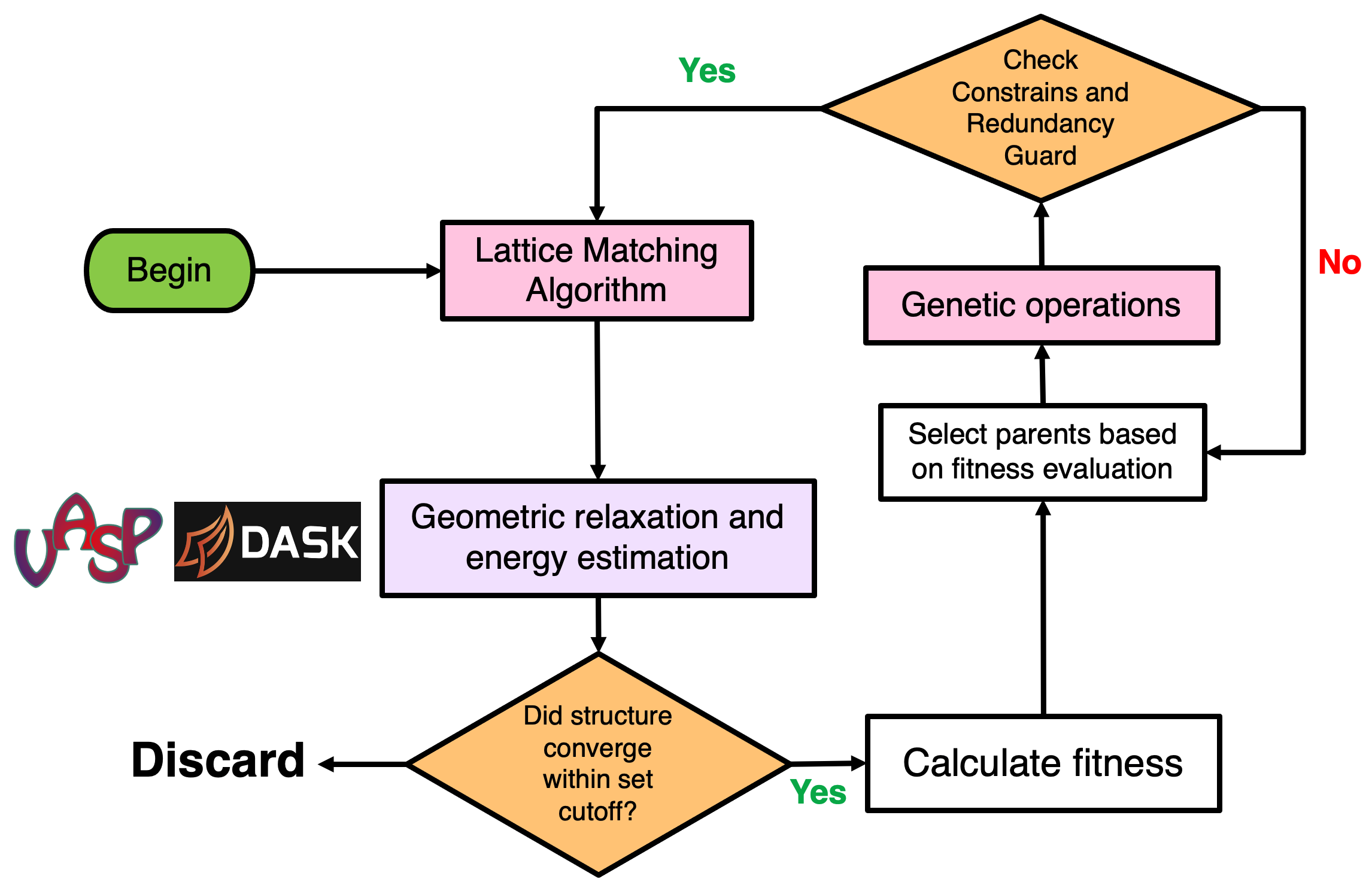GASP
Genetic algorithm combined with lattice-matching algorithm to generate multi-component interfacial model for catalyst design.
Developed in collaboration with Hennig group @ University of Florida
The surface structure of heterogeneous catalysts is well-known to dynamically respond to changes in the external reaction environment. As an example, the famous strong metal-support interaction involves full or partial covering of metal nanoparticles dispersed on oxide supports with reduced oxide films. Such structural perturbations result in profound changes in the catalytic properties of the underlying system.
To address this requirement, we worked on a grand-canonical evolutionary algorithm coupled with a geometric lattice-matching routine. We generate viable catalyst-surface morphologies through a series of geometric mutation and crossover operations, with the final fitness defined in terms of grand canonical surface-energy. Thus, we determine interfacial models with optimal composition and surface structure for specific external environments.
